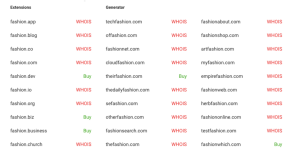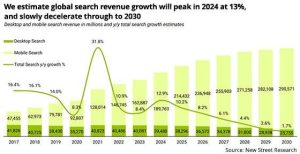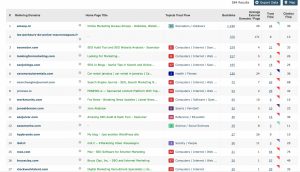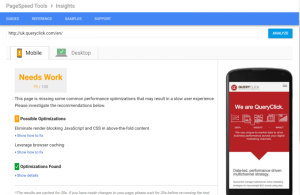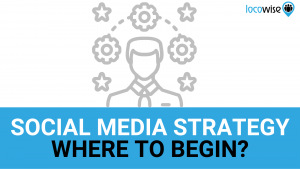— October 24, 2018
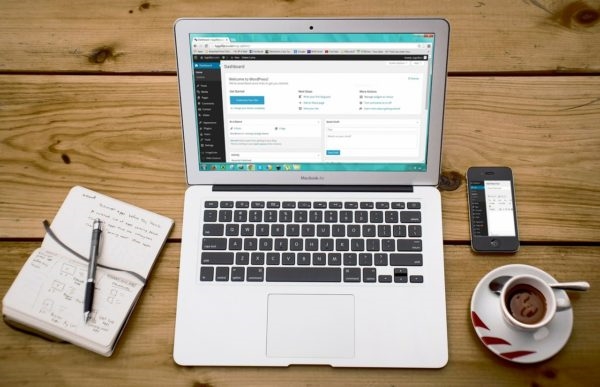
27707 / Pixabay
Own Up To It!
If you’ve listened to my podcast or read this blog for a while, you’ve heard me say you need to own it. What I mean by “Own It” is actually own your space on the internet. One of the things that a lot of people tend to do is they say, “Social media is all the rage.” Look at that bright shiny object, right? The big thing about social media is that you don’t own it, and they could take your account and your profile down in a heartbeat. One of the strongest things I love to get across to people is you should have your own website, and you should own that website. What I mean by owning it is, number one, own your domain name. Number two, own your hosting.
In other words, if you use something like Squarespace or Wix or Weebly, where you’re getting a free account, at any time you could spend a lot of money and a lot of time putting together this great website, and because you’re not paying a monthly fee for it and there’s no easy way to back it up or convert it and move it to another platform, you might be wasting your time. Eventually, you could have everything that you’ve done just poof, go away. Owning your content is incredibly important.
Go Away Daddy
I want to tell you a couple of stories first. I created a brand new course. It’s called Evernote for Business and it’s at EverNote4business.com. I started teaching my coaching clients and a whole bunch of different people, such as virtual assistants and business owners, how to use Evernote to become more productive. It’s an incredible tool, but the biggest problem is that most people don’t know, not only the nuts and bolts of what it does, but how to efficiently use it. So I said, “Okay, I’m creating this course.”
I go online, and I do what I’ve done for years: I went to Go Daddy and buy a domain. It’s relatively cheap, around $ 15. I’ve never really had a problem with it before, but this time it was different. I bought the domain, and I never pay for private registration. Why? Well, I found out why. Because what Go Daddy does now is, when you purchase a domain, they take you and a whole bunch of other people, and they put together a list and they sell that list to companies that build websites. A vast majority of people that are buying that list happen to be in India. What happened to me was the day after I registered it, my phone was ringing off the hook, and I’m not lying. Every five minutes, I got a phone call. They kept calling and calling and calling, and they would not stop, because they have call centers over there. They can do it really cheap, and it’s easy.
Finally, the only way I could make that stop was to pick up the phone and say, “Hey, number one, I’m a web development company. B, I do not outsource projects, period.” I got everything from, “We could do it cheaper.” “I don’t care.” “Oh, you broke my heart.” “No offense. I don’t care. I’m just trying to run my business. I don’t have time to take your sales pitches.” Lesson learned. With Go Daddy, if you don’t purchase this $ 8-a-year thing to make it private, now all of a sudden they’re just going to sell your information. Facebook, I get it, you don’t pay for it, but Go Daddy, I do pay for it. There is no reason they should be selling this to other people, but they do. Unless you pay an additional eight bucks.
Go Daddy Fail – Part Deux
Then I get an email from one of my clients over the weekend. Let’s call him Mark. Mark says, “Hey, I was just going through my PayPal, and I noticed that Go Daddy was charging me all these extra fees. I’m actually paying for hosting twice.” We can kind of went forth and back and back and forth and said, “Why is this happening?” What happened was they sent him an email. He thought it was a legit email. He says, “Sure, I’ll try your free trial.” Well, he did a free trial of something they suggest to him, and he ended up buying two hosting packages. Then, they tacked on their web security and safety program, and he’s paying $ 300 a year for something he wasn’t using. So he says, “How do I get that money back?” He called them up and they said, “Yeah, yeah, we’ll convert all this other stuff, and we’ll do all these gobbledygook and we’ll make it perfect.”
I said, “Hey, before you do that, let’s get the three of us on the phone and talk.” We did. We made sure that first and foremost, all the stuff that he purchased went away, and he got a credit for it. Then, they were going to transfer his website from his old server (which is one of the problems that I have with Go Daddy; I’ll explain that in a minute) to a new server. As they were getting ready to close out the deal, I said, “Hey, are you going to charge him a migration charge?” “Oh, yeah. That’s an extra 100 bucks.” I said, “Forget it. I’ll take care of it.” In the end, I saved him about $ 400 he did not have to pay. Let’s talk through that.
Domain Names
Number one, domain names. You want to buy your domain names. I can’t tell you where to go; there are a lot of places. Some people like Namecheap. Some people like Network Solutions. The bottom line is to find a place that you can trust, but I can tell you right now, I’m not going back to Go Daddy. Don’t buy that privacy thing. There’s no reason to have it. People are going to find it anyway. As soon as you put your website up, you give all your information away. Just remember, it’s their job to sell you as much crap as they possibly can, so don’t buy it. If you have to buy it in order to protect your name, something’s wrong.
Hosting
The second thing is the hosting platform. I suggest you go back and listen to the episodes where I talk about A2 Hosting. I love them. They’re local. Most of these companies like Go Daddy and HostGator and Dreamhost are owned by big conglomerates, and they’re in the business of making money. They don’t really give you the kind of tech support that you need, and they also charge you a lot of money, and they constantly try to sell you stuff that you do not want, period. Go with a company like A2 that’s based in the United States, that has English-speaking tech support, and has what’s known as cPanel. If you need an explanation about that, I could probably do another detailed post about it, but cPanel is the latest in hosting. The problem that I have with Go Daddy is if you bought a server five years ago, they never upgrade you. A2 will continue to upgrade the server and give you the latest and greatest. Go Daddy wants to charge you to move to the latest and greatest.
SSL Certificate
The next thing is an SSL Certificate. Google will make your site more findable if it is protected with SSL. Now, with A2, that’s included in the package. Go Daddy is going to charge you anywhere from $ 69 to $ 300 to put that on your site. Think about that when you’re purchasing your hosting.
Installed WordPress

The next thing is WordPress. They have different kinds of WordPress setups, like managed WordPress. Here’s the bottom line: get somebody to install it for you. On A2, they actually have it built in where they’ll install WordPress right on the cPanel for you. You don’t have to go download software and have a lot of technical knowledge. With those managed WordPress systems, you actually don’t have as much access and can’t do as much. In that case, you’re relying on them, and you’re going to pay for stuff you don’t need.
Install WordPress. Create an easy to remember but protected login. Use CAPTCHA codes. I know it’s a pain in the butt, but it stops people from hacking your site. Make sure that you’re updating your WordPress and the plugins on a regular basis.
Keep It Up (Maintenance)
That’s the last thing I’m going to talk about. If you have a WordPress website, it has to be maintained. I offer a service. I work with only the customers that I actually build their sites or work with them directly, and where I update their plugins, their WordPress and monitor it for them. There’s a free plugin called Wordfence that actually helps your site be protected from hackers who are trying to constantly get in there to get credit card information or use you as a spam bot.
Final Thoughts
The bottom line is to create a WordPress website that is protected and updated. I hope some of these cautionary tales get you thinking. Number one, own it. Make sure that you own the platform. Number two, keep it up-to-date. Trust me, you’ll thank me later.
I would love to hear your thoughts on this. Comment below and share your thoughts, ideas or questions about showing the concepts presented. Have you had to overcome any of the presented concepts? What worked and what did not live up to expectations? Do you have any ideas or advice you could share?
Digital & Social Articles on Business 2 Community
(65)


